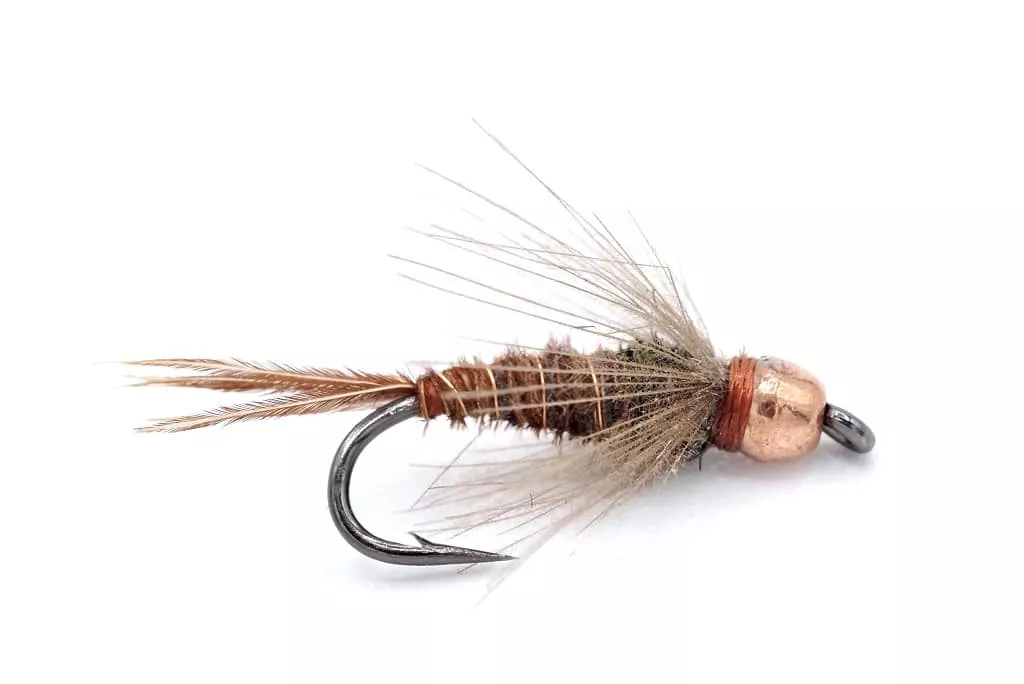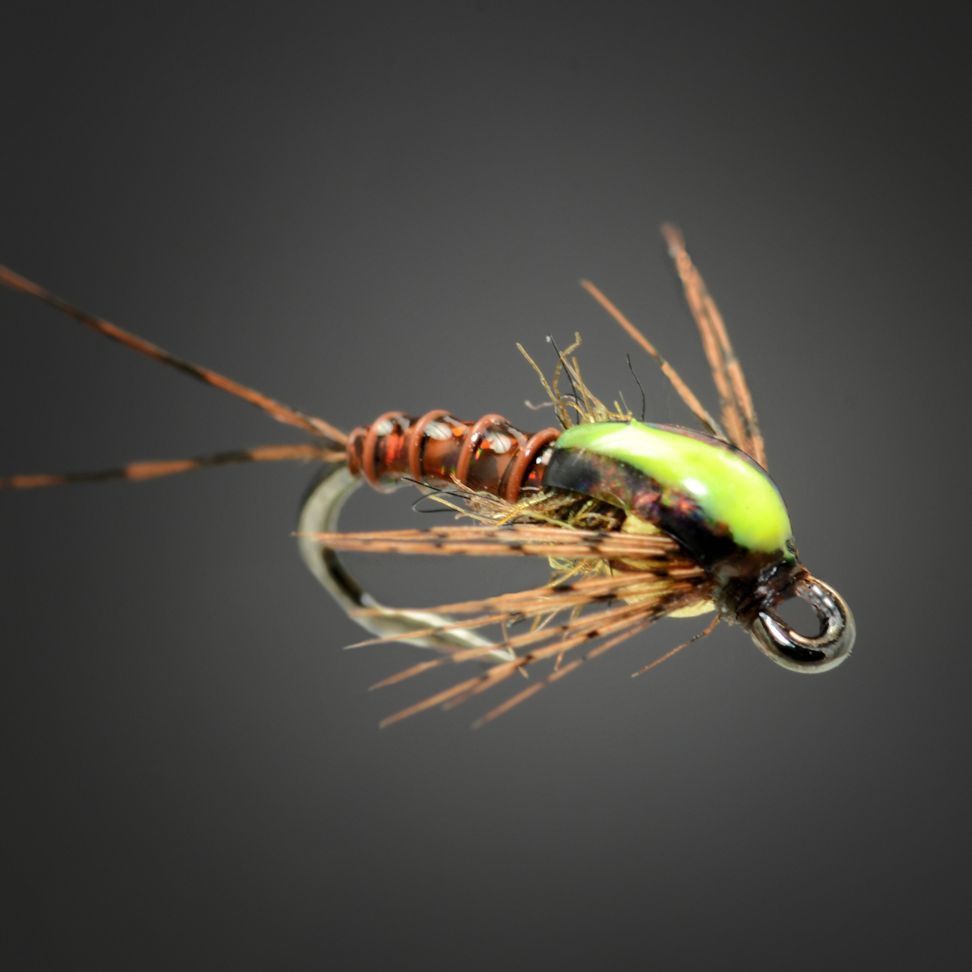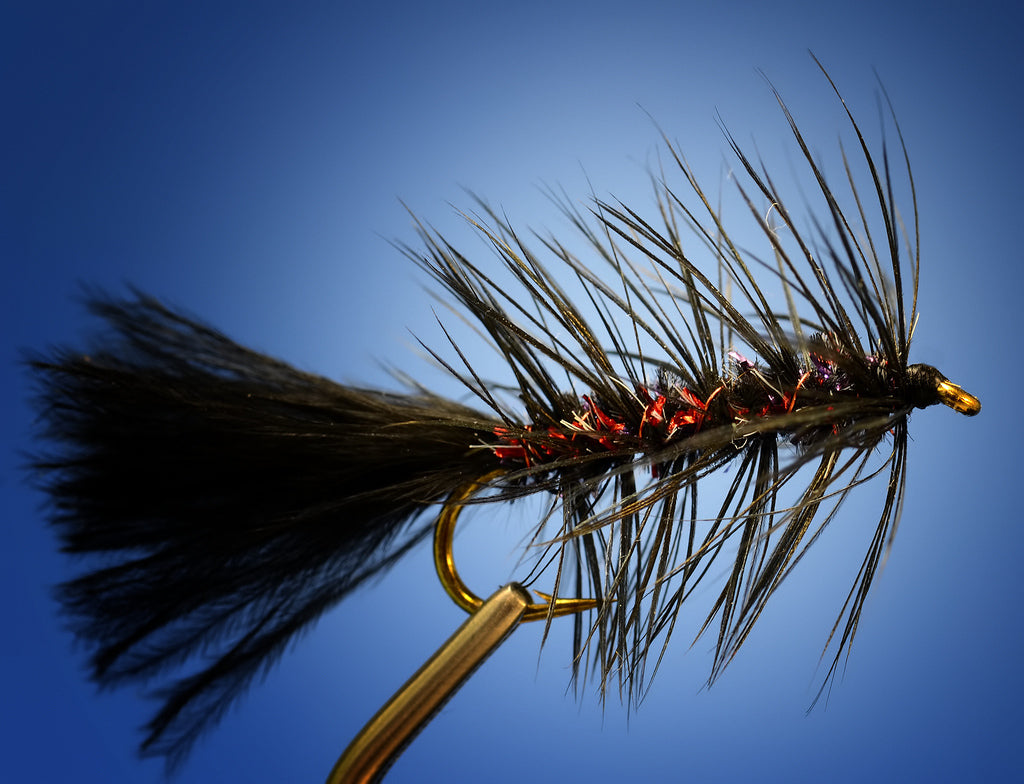NymphSwimming Crane Fly Larva
This pattern imitates the larval stage of the crane fly, a large, often-overlooked food source for trout. The marabou tail and rabbit fur body give this fly a lifelike, undulating movement in the water.
Spring, Summer
Advanced
Trout

Overview
This subsurface pattern imitates the large, wriggly larvae of crane flies. It's typically tied with a soft, tapered body made from materials like rabbit or synthetic dubbing, and often includes rubber legs or mono eyes for added movement and realism. Fished dead drift or on a slow retrieve, it excels in slower-moving water and muddy-bottomed streams where crane fly larvae thrive.
Pattern Characteristics
Materials
Hook: Orvis Tactical Barbless Jig Hook, size 12
Bead: Slotted tungsten bead, 1/8-inch, black
Thread: 70 Denier or 6/0, black
Tail guard: 25-pound-test monofilament
Tail/body: Natural-brown Rabbit Zonker Strip, trimmed on bottom
Fishing Tips
Season
This pattern is most effective in the spring and summer when crane flies are active.
Presentation
This pattern is designed to imitate a swimming larva, so a dead-drift presentation is not always necessary. Experiment with different retrieves.
When to Use
Use when trout are feeding on larger nymphs or ignoring smaller patterns.
Water Type
This pattern is best suited for moving water.
Rigging Suggestions
This pattern can be fished on its own or as the point fly in a tandem nymph rig.
Visibility & Floatation
This fly sinks and is meant to be fished near the bottom. The marabou tail is highly visible and moves enticingly in the water.





